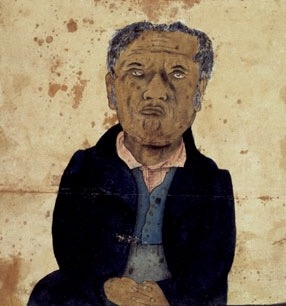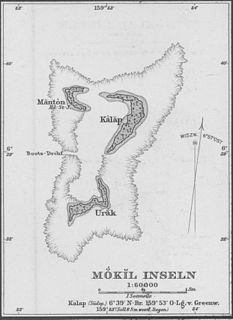
The Federated States of Micronesia is an independent republic associated to the United States. It consists of four states – from west to east, Yap, Chuuk, Pohnpei and Kosrae – that are spread across the Western Pacific Ocean. Together, the states comprise around 607 islands that cover a longitudinal distance of almost 2,700 km (1,678 mi) just north of the equator. They lie northeast of New Guinea, south of Guam and the Marianas, west of Nauru and the Marshall Islands, east of Palau and the Philippines, about 2,900 km (1,802 mi) north of eastern Australia and some 4,000 km (2,485 mi) southwest of the main islands of Hawaii.

The Federated States of Micronesia are located on the Caroline Islands in the western Pacific Ocean. The history of the modern Federated States of Micronesia is one of settlement by Micronesians; colonization by Spain, Germany, and Japan; United Nations trusteeship under United States-administered Trust Territory of the Pacific Islands; and gradual independence beginning with the ratification of a sovereign constitution in 1979.

The Caroline Islands are a widely scattered archipelago of tiny islands in the western Pacific Ocean, to the north of New Guinea. Politically they are divided between the Federated States of Micronesia in the eastern part of the group, and Palau at the extreme western end. Historically, this area was also called Nuevas Filipinas or New Philippines as they were part of the Spanish East Indies and governed from Manila in the Philippines.

Nan Madol is an archaeological site adjacent to the eastern shore of the island of Pohnpei, now part of the Madolenihmw district of Pohnpei state in the Federated States of Micronesia in the western Pacific Ocean. Nan Madol was the capital of the Saudeleur Dynasty until about 1628. The city, constructed in a lagoon, consists of a series of small artificial islands linked by a network of canals. The site core with its stone walls encloses an area approximately 1.5 km long by 0.5 km wide and it contains nearly 100 artificial islets—stone and coral fill platforms—bordered by tidal canals.

Miriam Likelike Kekāuluohi Keahelapalapa Kapili was a Princess of the Kingdom of Hawaiʻi, sister of the last two ruling monarchs, mother of Princess Kaʻiulani, last heir to the throne, and mistress of the ʻĀinahau estate. She shared the same name with Likelike, an earlier Hawaiian chiefess.

Hiram Bingham, formally Hiram Bingham I, was leader of the first group of American Protestant missionaries to introduce Christianity to the Hawaiian islands. Like most of the missionaries, he was from New England.

Hiram Bingham II, was a Protestant Christian missionary to Hawaii and the Gilbert Islands.

Alexis Bachelot, SS.CC., was a Roman Catholic priest best known for his tenure as the first Prefect Apostolic of the Sandwich Islands. In that role, he led the first permanent Catholic mission to the Kingdom of Hawaii. Bachelot was raised in France, where he attended the Irish College in Paris, and was ordained a priest in 1820. He led the first Catholic mission to Hawaii, arriving in 1827. Although he had expected the approval of then Hawaiian King Kamehameha II, he learned upon arrival that Kamehameha II had died and a new government that was hostile towards Catholic missionaries had been installed. Bachelot, however, was able to convert a small group of Hawaiians and quietly minister to them for four years before being deported in 1831 on the orders of Kaʻahumanu, the Kuhina Nui of Hawaii.

The Senyavin Islands belong to the Federated States of Micronesia. They consist of a larger volcanic Pohnpei Island and two small atolls Ant and Pakin.

Kolonia is a coastal town and the capital of Pohnpei State in the Federated States of Micronesia (FSM). It was also the former FSM capital before being replaced by Palikir in 1989, located nearby to the southwest in the municipality of Sokehs. It has about 6,000 people.
Japanese settlement in what now constitutes modern-day Federated States of Micronesia (FSM) dates back to the end of the 19th century, when Japanese traders and explorers settled on the central and eastern Carolines, although earlier contacts can not be completely excluded. After the islands were occupied by Japan in 1914, a large-scale Japanese immigration to them took place in the 1920s and 1930s. The Japanese government encouraged immigration to the islands belonging to the South Pacific Mandate to offset demographic and economic problems facing Japan at that time.

Peter Johnson Gulick was a missionary to the Kingdom of Hawaii and Japan. His descendants carried on the tradition of missionary work, and included several scientists.

Daniel Dole was a Protestant missionary educator from the United States to the Hawaiian Islands.

Abner Wilcox was a missionary teacher from New England to the Kingdom of Hawaii.
Isokelekel, also called Idzikolkol, was a semi-mythical hero warrior from Kosrae who conquered the Saudeleur Dynasty of Pohnpei, an island in the modern Federated States of Micronesia, sometime between the early 16th century and early 17th century. Some Kosraean variants name this hero Nanparatak, with features closer to Ulithian tales of the same archetype. He is considered the father of modern Pohnpei.

Edward Topping Doane was an American Protestant missionary in Micronesia.

Bartimeus Lalana Puaʻaiki was an early convert and the first Native Hawaiian to be licensed to preach Protestant Christianity. Prior to his conversion, he served as a hula dancer in the court of King Kamehameha II and Queen Kamāmalu.

Ephraim Weston Clark is most remembered for his decades of work helping to translate the Bible into the Hawaiian language, and his subsequent work on the 1868 revision of the translation. He was the third Kahu (pastor) of Kawaiahaʻo Church in Honolulu, and served in that position 15 years. His early years as a missionary were spent on the Hawaiian island of Maui; while serving as Kahu of Kawaiahaʻo, he also spent several months with the Hawaiian Missionary Society in Micronesia.
























